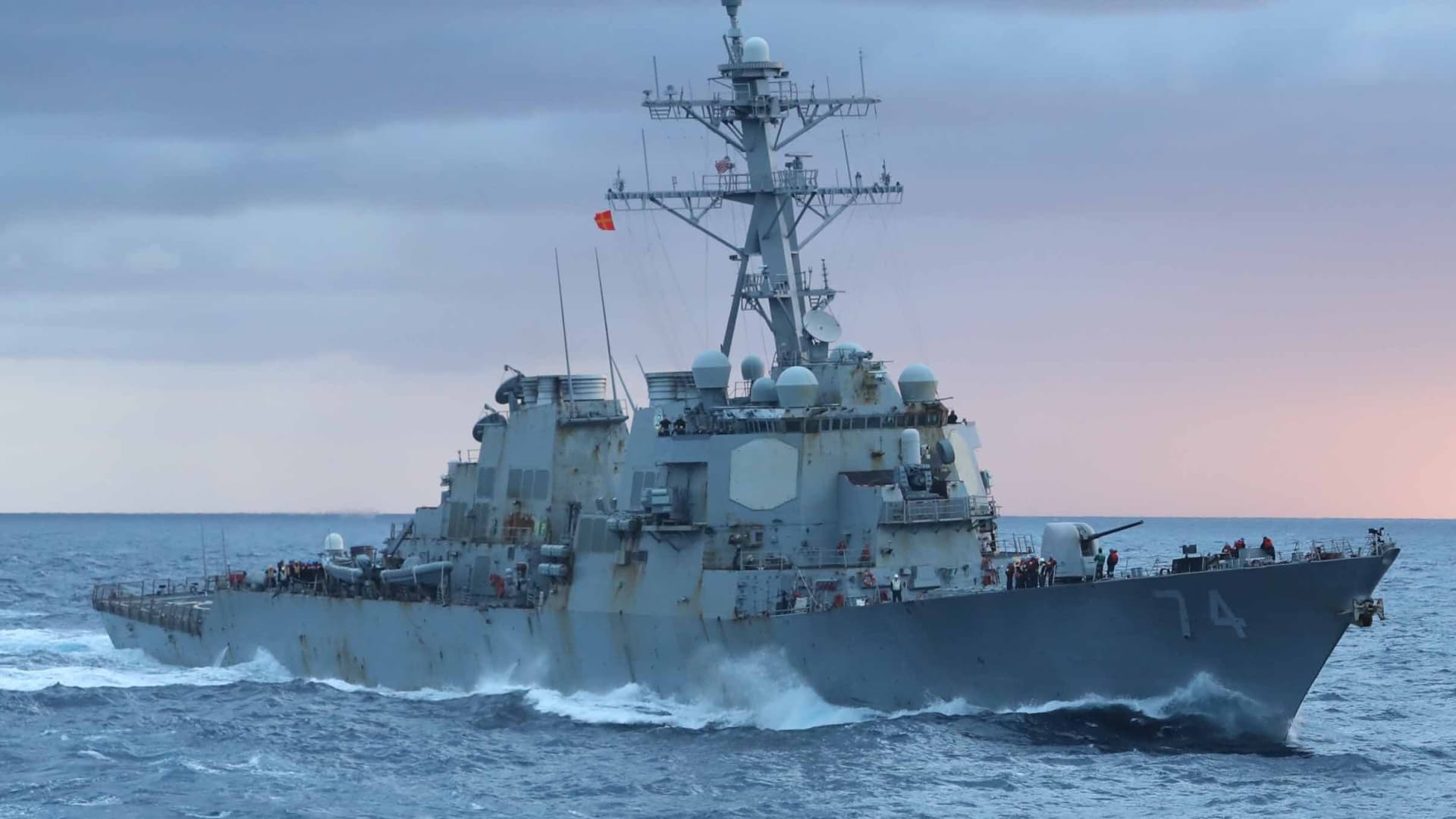The U.S. Navy is encountering a tenacious threat in the Red Sea. The Iran-backed Houthi rebels have launched wave after wave of low-cost precision weapons at vessels transiting the area, including attacks on U.S. warships themselves.
“That’s one of the things [that] the Red Sea sort of demonstrates … we never know where the maritime threat might come up,” said Bradley Martin, a senior policy researcher at Rand, in an interview with CNBC. “And we have to make sure we have sufficient force structure to meet that. That is going to be the real challenge of the next decade.”
Although the Navy has invested heavily in anti-air technology, including most notably the Aegis combat system for the past several decades, the most effective missiles are also the most expensive and difficult to produce.
“You’re seeing real proficiency and integrated air and missile defense because you have these destroyers doing the job that they were built for,” said Steve Wills, a Navalist at the Center for Maritime Strategy. “But when you start to look at the cost benefit analysis—and you have to do that—over time, these become expensive options. You’re talking about shooting down drones that cost $20,000 with a Standard Missile that’s a little over $2 million.”
As the U.S. encounters attacks by armed drones, cruise missiles, anti-ship ballistic missiles and other weapon systems in the Red Sea, the data gleaned from these encounters could prove invaluable in the Indo-Pacific region.
China’s People’s Liberation Army Rocket Force is a major threat to U.S. forces in the Pacific. China’s rocket troops can potentially field thousands of missiles that can reach across wide swaths of the Pacific. That means the U.S. could be facing overwhelming odds in intercepting any mass missile attack against American ships and bases.
Efforts to hide the movement of U.S. forces and misdirect or blind any reconnaissance systems could boost the Navy’s ability to defend against mass missile salvos in the event of a major war.
“As scary as the PLA rocket force is, in terms of the weapon systems … those units by themselves can’t find anything,” said Tom Shugart, adjunct senior fellow at the Center for a New American Security. “They’re just missiles on trucks. So something has got to find those targets for them.”
As the U.S. Navy increasingly finds itself stretched thin by conflict in the Middle East and the rising threat from China’s military buildup, the protection of commerce continues to be a prime responsibility of America’s naval power.
“The United States is a maritime power,” said Brad Bowman, senior director of the Center on Military and Political Power at the Foundation for Defense of Democracies. “We’re a trading power. American prosperity and security depends on the free flow of commerce, including maritime commerce”
Watch the video to find out if the U.S. Navy can keep up with looming missile threats from Iran and China

